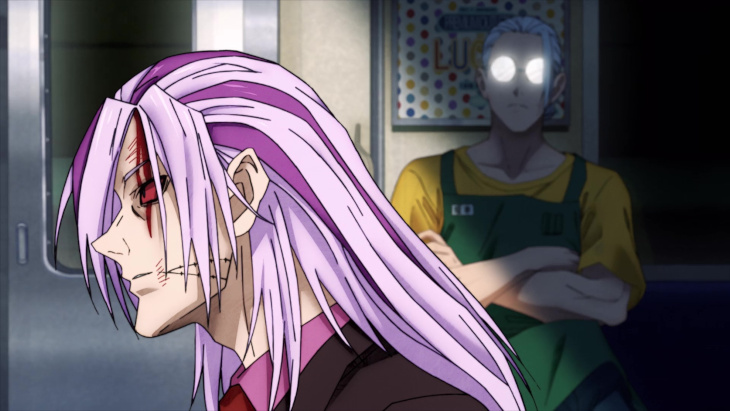
“There was once a legendary hitman. His name was… Taro Sakamoto.”
I’m a tad surprised I didn’t write a First Impressions review of Sakamoto Days. It appears I started it, but ended up running out of steam in the first paragraph. I can understand why this happened. Comedies can be a little difficult to dissect, since humor is so subjective, and sometimes it takes a few episodes for a show’s comedic voice to click with you. For instance, I was pretty lukewarm on the first episodes of One-Punch Man and Mob Psycho 100, and both of those are rightfully considered classics.
Despite treading similar ground, Sakamoto Days feels like it misses that mark, and unfortunately I think much of the blame can be and has been placed on the shoulders of the production. The comparison I just made to ONE’s series actually evokes a ton of parallels and contrasts. Even if you take away the brilliant visuals, the writing of One-Punch Man and Mob Psycho is still able to carry those series. That alone is evidenced by ONE’s own limited artistic talents, but Sakamoto Days isn’t on that level. Without the visual flair of its source material, Sakamoto Days is forced to subsist on the quality of its writing and humor, and that’s… fine.
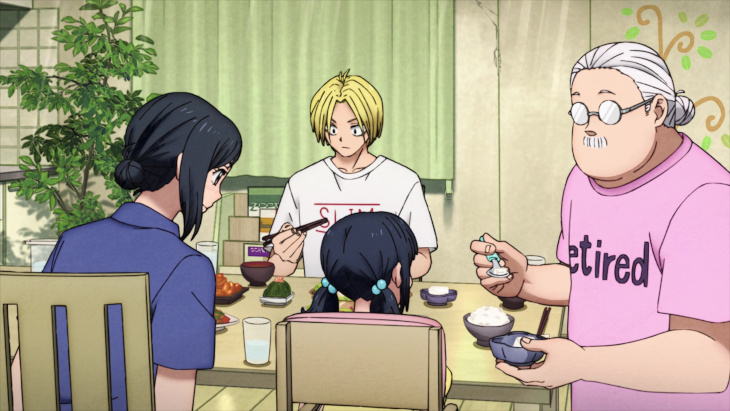
Sakamoto Days follows Taro Sakamoto, a man who was once the most feared hitman in Japan, but has since retired to run a convenience store. He’s joined by Shin, a psychic who used to work alongside Sakamoto as an assassin, and Lu, the orphaned daughter of a Triad family. Together, they run the shop while navigating the various individuals who seek to kill Sakamoto. This is further complicated by one of the Sakamoto Family Rules dictated by Sakamoto’s wife, Aoi. If he kills anyone, she’ll divorce him and take their daughter.
When reflecting on the premise, there is a strong sense of One-Punch meets Spy x Family, though the tone strays more towards the latter than the former. Sakamoto may be a ludicrously strong, if tubby, Saitama-style juggernaut, but the lack of a body count keeps things on a lighter side, and the themes of family harken back to the Forgers. Unfortunately, in both comparisons, Sakamoto Days falls short. It doesn’t have the engaging action of One-Punch, and the comedy isn’t as strong as that of either show.
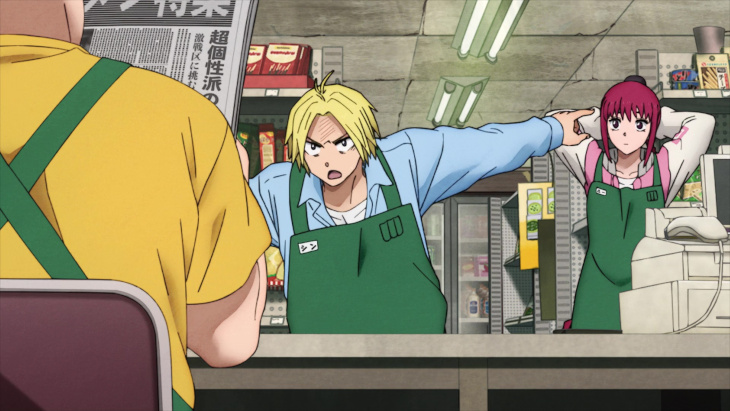
I don’t mean to sound too harsh. In my opinion, the show is fine, but it’s hard not to view it through a filter, given the hype that surrounded it leading up to its release. Arguably its biggest strength is its characters, and they do have some fun dynamics. As a make-shift family, the staff of Sakamoto’s shop bring an engaging energy to the proceedings. The running gags are okay, but they start feeling stale within a few episodes.
The show also steers straight into one of my pet peeves. Usually, when a show runs for two cour, I wait until both halves have aired in order to review it. However, the “Part 1” in the title and the “Usually” at the start of this sentence may have clued you in to the fact that this isn’t one of those times. That’s right, the first half of this season aired during the winter season, but the latter half will air during the summer. This is hardly the worst offender, but it irritates me since I can’t think of any logical reason why they couldn’t just call them season 1 and season 2. It throws off the industry terminology when they do this, and it makes it much harder to track one’s own viewership when you have to distinguish between multiple seasons and one multi-part season.
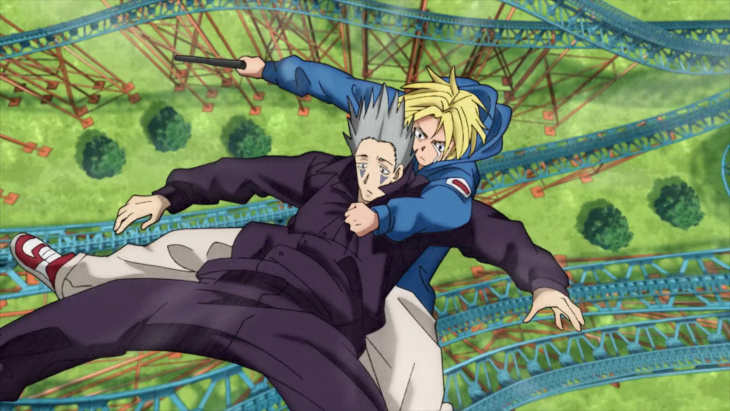
TMS Entertainment’s production quality can be all over the place. They often handle the planning side of production and leave the animation to other studios, such as with this season’s Blue Box and Honey Lemon Soda, which were animated by Telecom Animation Film and J.C. Staff respectively. That alone shows how disparate the production quality of their series can be.
Sakamoto Days is one of the instances where they took on the entirety of the production duties, and I can’t say I’m impressed. The visuals aren’t bad, but I looked up some panels from the manga for the sake of comparison, and I don’t think the anime can hold a candle to the original. I’m not exaggerating when I say that, at least in some instances, the manga does a better job of capturing kinetic movement than the animation. That is both glowing praise for the mangaka Yuto Suzuki’s art, and a harsh criticism for the animation. Again, the show isn’t bad, but the visuals feel flat, the movement is stiff, and the action isn’t engaging.
I do like the OP though. The imagery is decent, but the main draw for me is the music, which I enjoyed. What can I say? I’m a sucker for an alt-rock track. The ED is pleasant, with a nice thematic thread connecting the still images, but ultimately it’s not likely to stick in anyone’s mind.
Before I wrap up, a few Notes and Nitpicks:
- I’ve been debating whether I’ll watch the second half of this season, but I think the answer is no. If I was going to look into the series further, I’d probably do so via the manga, as it seems like the preferable medium.
- The director, Masaki Watanabe, has been in the industry for a while, but this appears to be the highest profile work he’s directed. It looks like he directed the original Bartender, but most of his work was on the Battle Spirits franchise… No, I’ve never heard of it either. It’s some card game anime.
- Shonen Jump has some more premieres on the horizon. I hope those hold up better than this did.
- I almost gave this a lower score, but I think the process of reviewing this anime forced me into a negative mindset. I keep envisioning what could have been, but just because the show fails to live up to its potential doesn’t make it any less watchable.
- Occasionally, during the course of a fight, Sakamoto will shed his weight, returning to his original physique. I can write that off as comedy silliness, but the thing that bugs me is… why does he lose his moustache, too?
Sakamoto Days was the big new anime of the season, and it just didn’t have what it took to bear that title. With weak animation, and mediocre execution of its gags, it’s hard to recommend. This probably sounds oddly harsh, particularly given the passable score I’m giving it, but the reason I’m so reticent to provide an endorsement is that I have reason to suspect that the manga provides a far superior experience. If you’re curious about this story, you should probably start there.


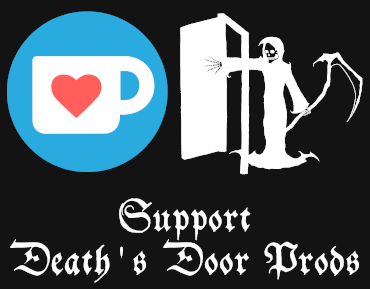

Add comment